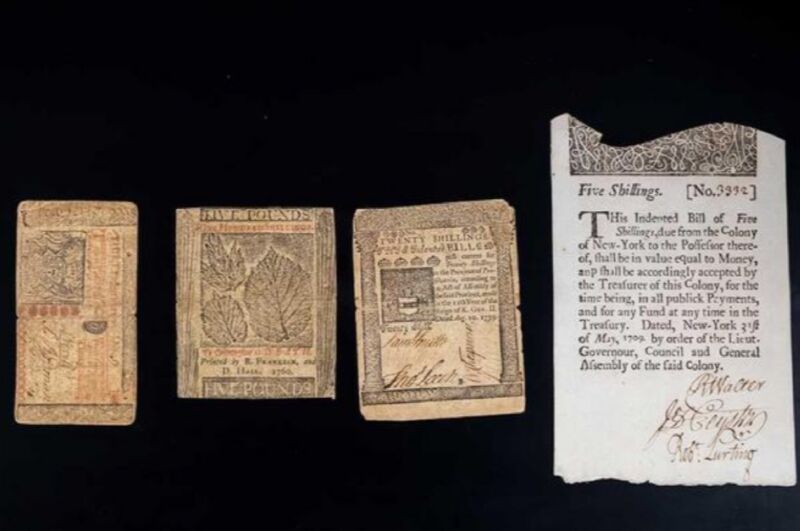Ben Franklin wove colored fibers into paper currency to foil counterfeiters

Enlarge / Khachatur Manukyan and colleagues at the University of Notre Dame used cutting-edge spectroscopic and imaging instruments to get a closer look at the inks, paper, and fibers that made Benjamin Franklin's bills distinctive and hard to replicate. (credit: University of Notre Dame)
A papermaker in Massachusetts named Zenas Marshall Crane is traditionally credited with being the first to include tiny fibers in the paper pulp used to print currency in 1844. But scientists at the University of Notre Dame have found evidence that Benjamin Franklin was incorporating colored fibers into his own printed currency much earlier, among other findings, according to a new paper published in the journal Proceedings of the National Academy of Sciences (PNAS).
We first reported on Franklin's ingenious currency innovations-most likely intended to foil counterfeiters (although this is disputed by at least one economist)-in 2021, when Notre Dame nuclear physicist Michael Wiescher gave a talk summarizing his group's early findings. The new paper, co-authored by Weischer, covers those earlier results along with the colored fiber evidence. As previously reported, the American colonies initially adopted the bartering system of the Native Americans, trading furs and strings of decorative shells known as wampum, as well as crops and imported manufactured items like nails. But the Boston Mint used Spanish silver between 1653 and 1686 for minting coins, adding a little copper or iron to increase their profits (a common practice).
The first paper money appeared in 1690 when the Massachusetts Bay Colony printed paper currency to pay soldiers to fight campaigns against the French in Canada. The other colonies soon followed suit, although there was no uniform system of value for any of the currency. To combat the inevitable counterfeiters, government printers sometimes made indentations in the cut of the bill, which would be matched to government records to redeem the bills for coins. But this method wasn't ideal since paper currency was prone to damage.